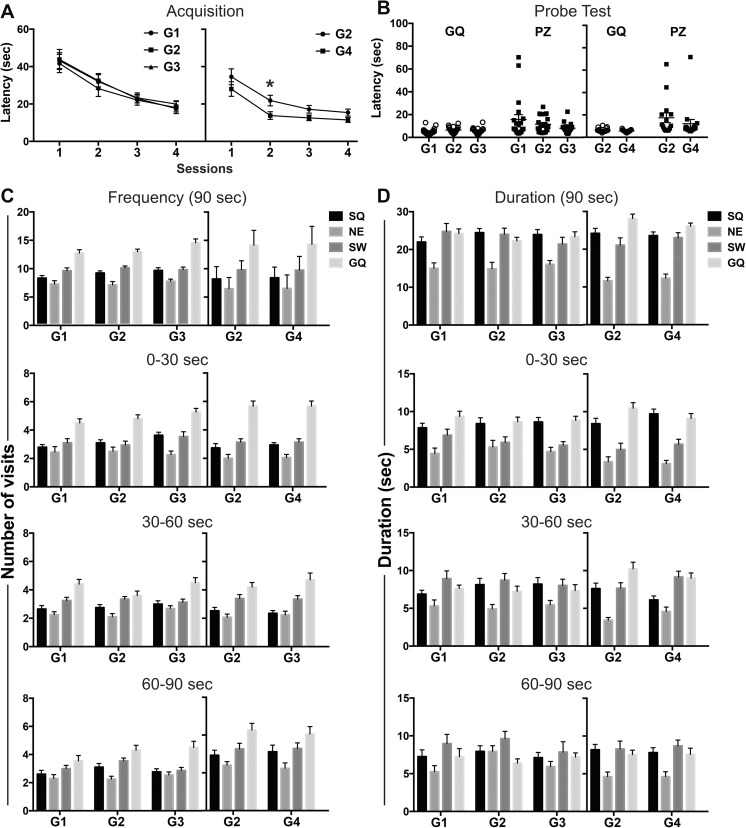Fig. 5.
Morris water maze reversal learning of adult Long-Evans hooded male rats. (a) Acquisition as measured by mean latency (three trials per day) ± SEM to escape onto platform located in new goal quadrant (GQ). A significant decrease in latency was observed over training (G1 vs. G2: F(3,114) =16.85; p<0.0001; G2 vs. G3: F(3,120) =19.27; p <0.0001; G2 vs. G4: F(3,90) =20.29; p <0.0001). *p < 0.01 as compared to G2. (b) Probe trial initial latencies to enter GQ or platform zone (PZ). Probe trial distribution to quadrants across 90- and 30-s epochs for (c) # visits and (d) duration of time in each quadrant. Data represents mean ± SEM. G1: standard chow/RO-H2O (n = 20); G2: low-F− chow/RO-H2O (n = 20); G3: low-F− chow/10 ppm F− drinking water (n = 22) and G2 (n = 15) and G4 low-F− chow/20 ppm F− drinking water (n = 17). Drinking water exposure began on gestational day 6. Distinction of the individual quadrants: GQ, Southeast goal quadrant; SW, Southwest; NE, Northeast; SQ, Northwest start quadrant

